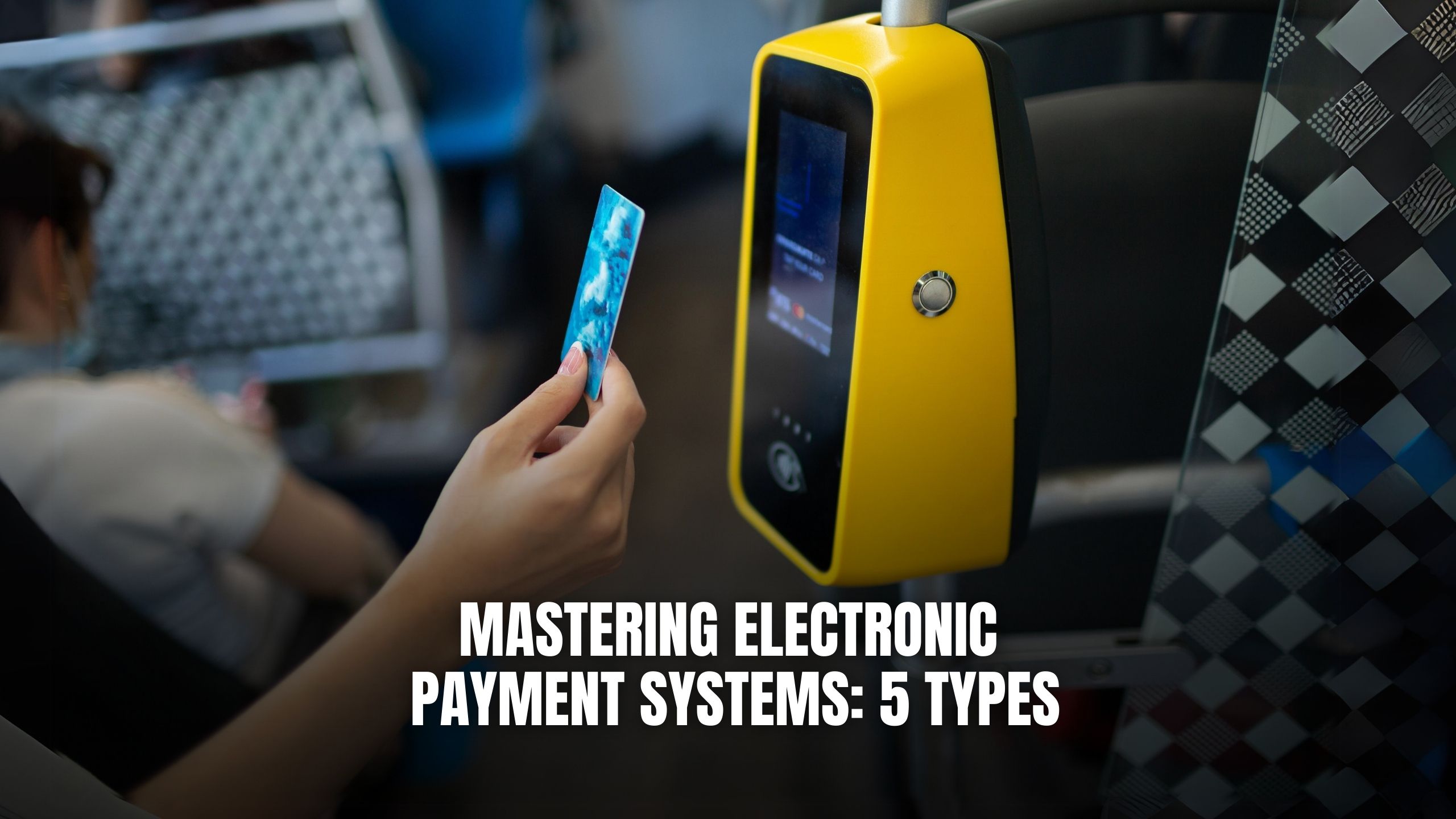Mastering Electronic Payment Systems: 5 Types


Mastering Electronic Payment Systems: 5 Types
Electronic payment systems have revolutionized the way we conduct transactions, offering convenience, speed, and security. In this blog, we’ll explore five types of electronic payment systems, their functionalities, and how they shape modern commerce.
1. Credit Cards
Credit cards are one of the most widely used electronic payment systems globally. They enable consumers to make purchases by borrowing funds from a financial institution, which are then repaid later with interest or within a grace period. With features like fraud protection and rewards programs, credit cards offer flexibility and security in transactions.
2. Debit Cards
Debit cards are linked to a user’s bank account and allow for direct withdrawals of funds during transactions. Unlike credit cards, debit cards deduct the purchase amount directly from the user’s account, providing a convenient way to manage expenses without accumulating debt. With widespread acceptance and real-time transaction processing, debit cards are a popular choice for everyday purchases.
3. Mobile Payment Apps
Mobile payment apps, such as PayPal and Venmo, have gained popularity for their ease of use and versatility. These apps allow users to send and receive money electronically using their smartphones, facilitating peer-to-peer transactions, online purchases, and even in-store payments. With features like instant transfers and buyer protection, mobile payment apps offer a seamless and secure payment experience.
4. Digital Wallets
Digital wallets, like Apple Pay and Google Pay, store users’ payment information securely on their devices. They enable contactless payments at participating merchants using near-field communication (NFC) technology, eliminating the need for physical cards or cash. With built-in security features such as tokenization and biometric authentication, digital wallets offer a convenient and secure alternative to traditional payment methods.
5. Cryptocurrency
Cryptocurrency, such as Bitcoin and Ethereum, operates on blockchain technology and enables decentralized digital transactions. Unlike traditional currencies, cryptocurrencies are not regulated by any central authority, offering users greater control over their finances and enhanced privacy. With features like low transaction fees and global accessibility, cryptocurrency is gaining traction as a viable electronic payment system in various industries.
Recommended Saas Products:
- PayPal: Facilitates online payments securely and conveniently.
- Venmo: Enables peer-to-peer payments through a user-friendly mobile app.
- Apple Pay: Offers contactless payments using Apple devices.
- Google Pay: Simplifies transactions with seamless mobile payments.
Conclusion
Mastering electronic payment systems is essential for navigating today’s digital economy. Understanding the functionalities and benefits of different payment methods empowers businesses and consumers to make informed choices that align with their needs and preferences.
Simplify Your Payment Processes with Subscribed.fyi!
Ready to streamline your payment processes? Subscribed.fyi offers exclusive deals on essential SaaS tools to help you manage your electronic payment systems effortlessly. Sign up for free to unlock secret deals and access savings on payment processing solutions and other essential resources. Enhance your financial management, boost efficiency, and stay ahead in the digital payment landscape with Subscribed.fyi.
Relevant SaaS Products:





